Serving 400 students in grades 9-12, Morris Academy For Collaborative Studies ranks in the top 20% of all schools in New York for overall test scores (math proficiency is top 20%, and reading proficiency is top 20%).
The percentage of students achieving proficiency in math is 70-74% (which is higher than the New York state average of 46%). The percentage of students achieving proficiency in reading/language arts is 80-84% (which is higher than the New York state average of 49%).
The student:teacher ratio of 11:1 is equal to the New York state level of 11:1.
Minority enrollment is 99% of the student body (majority Hispanic), which is higher than the New York state average of 60% (majority Hispanic).
Quick Stats (2025)
- Grades: 9-12
- Enrollment: 400 students
- Student:Teacher Ratio: 11:1
- Minority Enrollment: 99%
- Graduation Rate: 90-94% (Top 30% in NY)
- Overall Testing Rank: Top 20%
- Math Proficiency: 70-74% (Top 20%)
- Reading Proficiency: 80-84% (Top 10%)
- Science Proficiency: ≥95% (Top 5%)
- Source: National Center for Education Statistics (NCES), NY Dept. of Education
Top Rankings
Morris Academy For Collaborative Studies ranks among the top 20% of public schools in New York for:
Category
Attribute
Overall Rank
Math Proficiency
Reading/Language Arts Proficiency
Science Proficiency
Percent Eligible For Free Lunch
School Overview
Morris Academy For Collaborative Studies's student population of 400 students has stayed relatively flat over five school years.
The teacher population of 36 teachers has grown by 5% over five school years.
Grades Offered
Grades 9-12
(offers virtual instruction)
(offers virtual instruction)
Total Students
400 students

Gender %
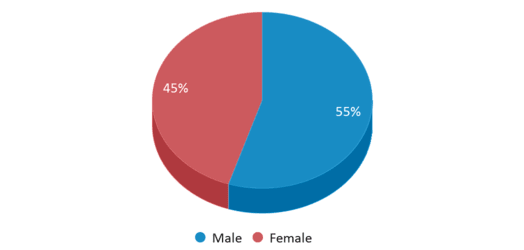
Total Classroom Teachers
36 teachers
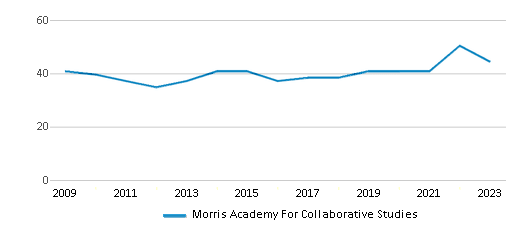
Students by Grade
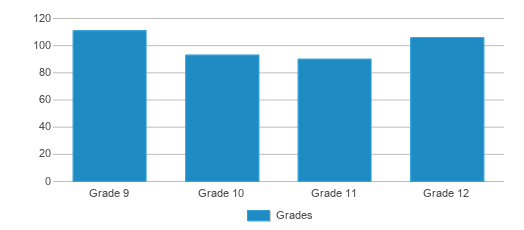
School Rankings
Morris Academy For Collaborative Studies ranks within the top 20% of all 4,377 schools in New York (based off of combined math and reading proficiency testing data).
The diversity score of Morris Academy For Collaborative Studies is 0.39, which is less than the diversity score at state average of 0.72. The school's diversity has stayed relatively flat over five school years.
Overall Testing Rank
#536 out of 4377 schools
(Top 20%)
(Top 20%)
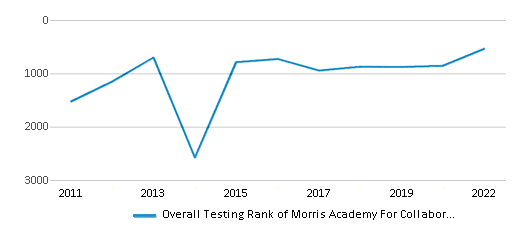
Math Test Scores (% Proficient)
70-74%
46%
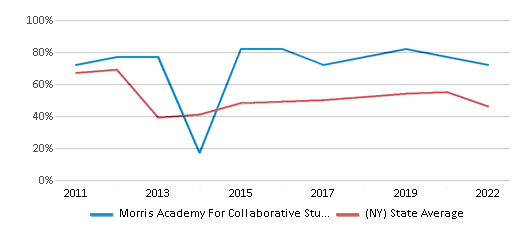
Reading/Language Arts Test Scores (% Proficient)
80-84%
49%
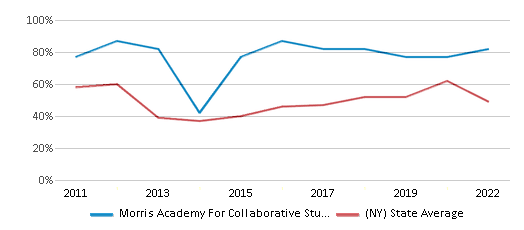
Science Test Scores (% Proficient)
≥95%
78%
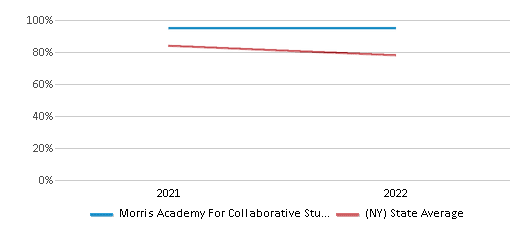
Student : Teacher Ratio
11:1
11:1
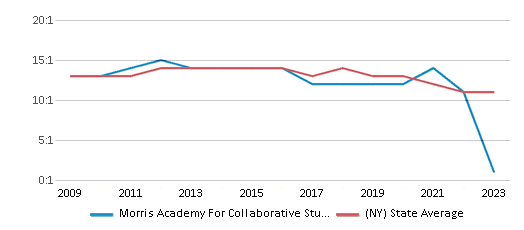
American Indian
n/a
1%
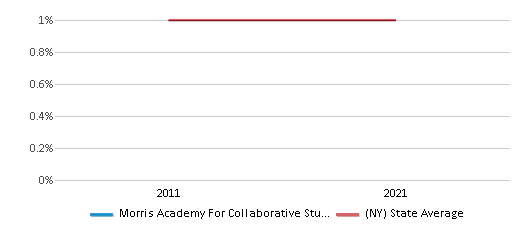
Asian
1%
10%
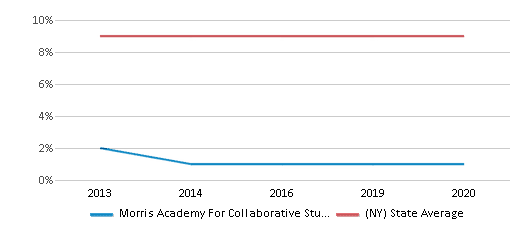
Hispanic
75%
30%
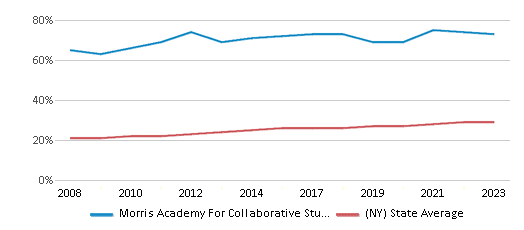
Black
23%
16%
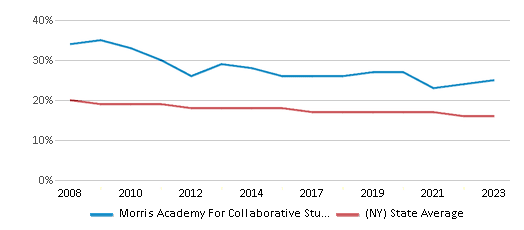
White
1%
40%
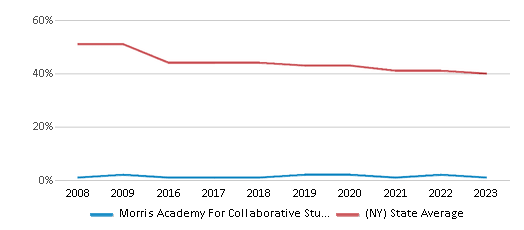
Hawaiian
n/a
n/a
Two or more races
n/a
3%
All Ethnic Groups
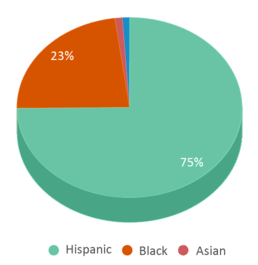
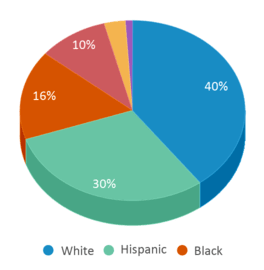
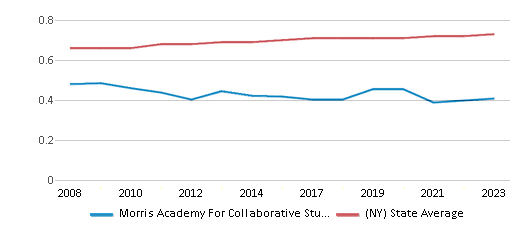
Graduation Rate
90-94%
87%
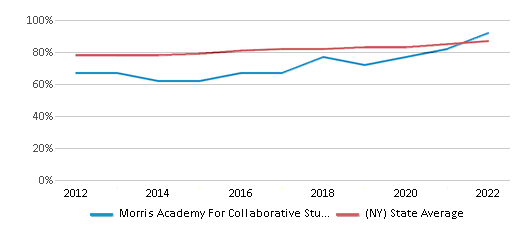
Participates in the National School Lunch Program (NSLP)
Yes
Eligible for Free Lunch
95%
54%
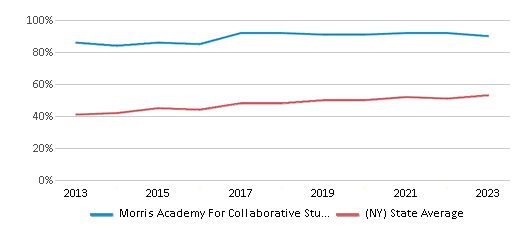
Eligible for Reduced Lunch
1%
3%
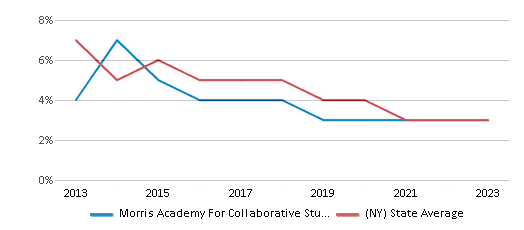
School Statewide Testing
School District Name
Source: National Center for Education Statistics (NCES), NY Dept. of Education
Profile last updated: 02/09/2025
Frequently Asked Questions
What is Morris Academy For Collaborative Studies's ranking?
Morris Academy For Collaborative Studies is ranked #536 out of 4,377 schools, which ranks it among the top 20% of public schools in New York.
What schools are Morris Academy For Collaborative Studies often compared to?
Morris Academy For Collaborative Studiesis often viewed alongside schools like Herbert H Lehman High School, Dewitt Clinton High School by visitors of our site.
What percent of students have achieved state testing proficiency in math and reading?
70-74% of students have achieved math proficiency (compared to the 46% NY state average), while 80-84% of students have achieved reading proficiency (compared to the 49% NY state average).
What is the graduation rate of Morris Academy For Collaborative Studies?
The graduation rate of Morris Academy For Collaborative Studies is 90-94%, which is higher than the New York state average of 87%.
How many students attend Morris Academy For Collaborative Studies?
400 students attend Morris Academy For Collaborative Studies.
What is the racial composition of the student body?
75% of Morris Academy For Collaborative Studies students are Hispanic, 23% of students are Black, 1% of students are Asian, and 1% of students are White.
What is the student:teacher ratio of Morris Academy For Collaborative Studies?
Morris Academy For Collaborative Studies has a student ration of 11:1, which is equal to the New York state average of 11:1.
What grades does Morris Academy For Collaborative Studies offer ?
Morris Academy For Collaborative Studies offers enrollment in grades 9-12 (offers virtual instruction).
What school district is Morris Academy For Collaborative Studies part of?
Morris Academy For Collaborative Studies is part of New York City Geographic District # 9 School District.
In what neighborhood is Morris Academy For Collaborative Studies located?
Morris Academy For Collaborative Studies is located in the Morrisania neighborhood of Bronx, NY. There are 40 other public schools located in Morrisania.
School Reviews
5 7/1/2019
So far they helped us with everything we needed. Very nice staff
5 9/20/2018
The School is safe. The teachers care about the school very much . It`s clean and they a have many programs that allow the children to improve socially and academically.
2 7/24/2013
my son should be starting in Stepember
I was inquiring if you have an open house?
Review Morris Academy For Collaborative Studies. Reviews should be a few sentences in length. Please include any comments on:
- Quality of academic programs, teachers, and facilities
- Availability of music, art, sports and other extracurricular activities
Recent Articles

What Is A Charter School?
Explore the world of charter schools in this comprehensive guide. Learn about their history, how they operate, and the pros and cons of this educational innovation. Discover key facts about charter schools, including admission policies, demographics, and funding, as well as what to look for when considering a charter school for your child.

10 Reasons Why High School Sports Benefit Students
Discover the 10 compelling reasons why high school sports are beneficial for students. This comprehensive article explores how athletics enhance academic performance, foster personal growth, and develop crucial life skills. From improved fitness and time management to leadership development and community representation, learn why participating in high school sports can be a game-changer for students' overall success and well-being.

February 05, 2025
Understanding the U.S. Department of Education: Structure, Impact, and EvolutionWe explore how the Department of Education shapes American education, from its cabinet-level leadership to its impact on millions of students, written for general audiences seeking clarity on this vital institution.






